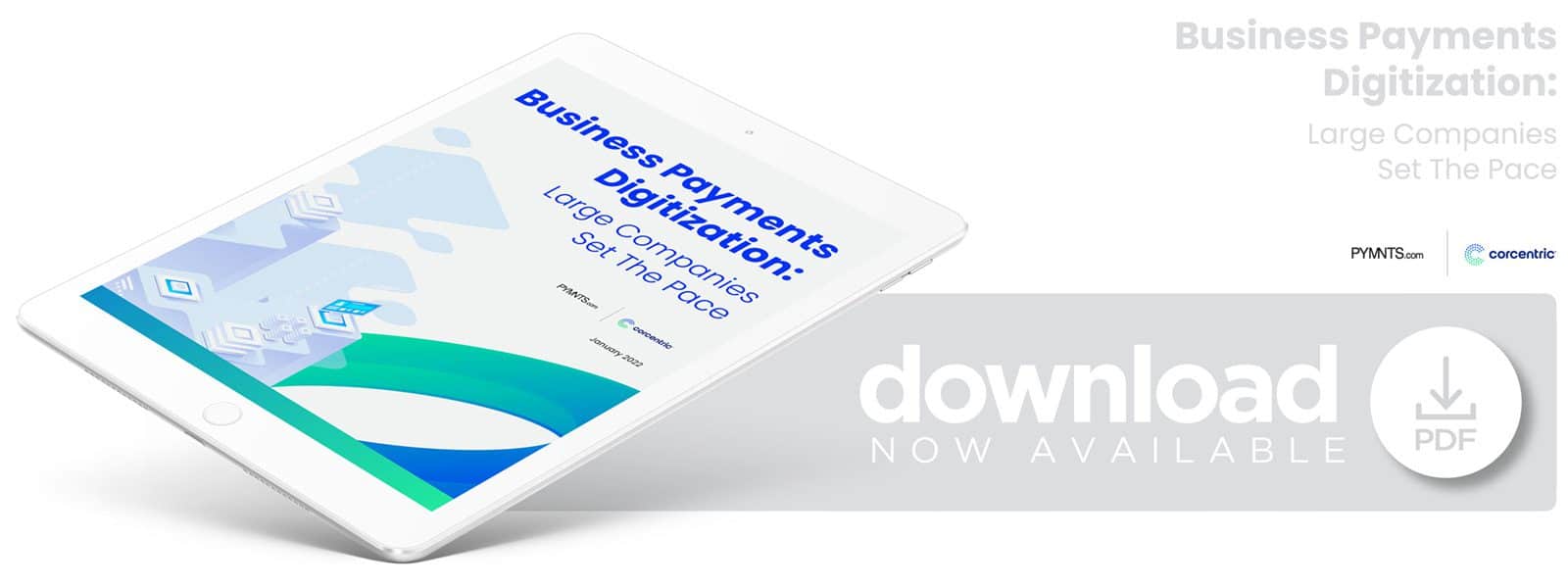Originally appeared in PYMNTS.com
Smaller companies tend to see their digitization efforts as an avenue to eliminate manual processes and cut costs, according to “Business Payments Digitization,” a PYMNTS and collaboration based on a survey of chief financial officers (CFOs) from firms that generate between $400 million and $2 billion in annual revenue.
Get the report: Business Payments Digitization
Among the CFOs from the smallest firms included in the report — those with revenue of $400 million to $750 million — 71% say digitization is mostly about automation, while just 29% say it is about transformation.
By contrast, most of the CFOs from firms in three categories of large companies say digitization is mostly about transformation — meaning they see digitization as an opportunity to transform their payments operations and wholly reconsider how payment methods connect them to customers and suppliers.
That’s the answer given by 58% of those at small firms ($750 million to $1 billion), 71% of those at mid-sized firms ($1 billion to $1.5 billion) and 89% of those at the largest firms ($1.5 billion to $2 billion).
Realizing the Benefits of Digitization
Though both groups — those who prioritize automation and those who aim for the transformation of their payments processing — have realized some digitization benefits, the differences in their reasons for digitizing help illustrate their varied strategies and level of success.
The largest companies tend to see digitization as an opportunity to transform their payments processes. Rather than expecting limited improvements, these companies’ CFOs consider digitization to be a large-scale shift that cuts costs and empowers them to rethink their operations and wholly evolve their collaboration with customers and suppliers.
These transformation-focused companies want to leverage newly digitized operations to revamp everything they do with payments operations.
The smallest companies included in the report, on the other hand, are more likely to consider digitization as a means of automating existing manual processes or eliminating some entirely to streamline operations.
These companies almost certainly save money, improve efficiency and speed up their workflows. Still, they may have to put more effort into adapting their internal culture than larger companies to fully capitalize on these changes.
Ditching Manual Processes
CFOs are ditching manual processes to achieve greater operational efficiency, holistic cash flow and working capital, seamless operations integration and enhanced security, Corcentric Chief Operating Officer Matt Clark wrote in a recently released PYMNTS eBook.
“Innovation and investment in technology allow treasury and accounting functions to maximize cash flow and optimize working capital across the entire payment ecosystem,” Clark wrote.
Read more: Innovation’s Impact on Payments Trends for CFOs in 2022
Having decided to digitize payments processes, many businesses hope to move forward with more efficient and lower-cost payments operations that also allow them to increase their level of interaction with customers and suppliers.
While a great deal of economic uncertainty remains about the future, one thing is certain: The new economy will continue to follow the trends of the past two years and will be powered by a much greater share of digital payments than was the case before March 2020.
Companies that have established digital payments infrastructures inside their finance departments are best prepared to deliver what they need to succeed.
At Corcentric, we stand ready to help. To learn how we can help, contact Corcentric today.
